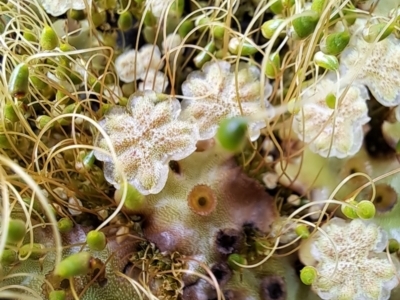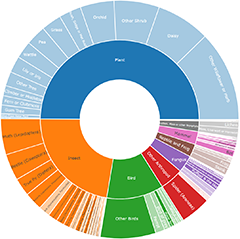Mosses, Liverworts & Hornworts
Bryophyte is the collective name for the mosses, liverworts and hornworts. Bryophytes are spore-producing, rather than seed-producing, plants and they are all without flowers.
While there are marked differences between mosses, liverworts and hornworts, they are related closely enough to warrant a single term that includes all three. Bryophytes vary in size from plants only slightly over a millimetre tall to trailing species which grow to strands well over a metre long. Although they are often found in rainforests they can be found in a variety of habitats including arid and alpine areas. They occur most abundantly in relatively unpolluted areas. They can also be found growing on a variety of surfaces (or substrates) ranging from soil, rock, tree trunks, leaves, rotting wood, bones, to old discarded shoes or gloves. Bryophytes don’t have true roots. They have root-like anchoring structures called rhizoids but these do not actively extract minerals and water from the substrate.
You can read more about Bryophytes here: https://www.cpbr.gov.au/bryophyte/
Announcements
There are currently no announcements.
Discussion
Polytrichaceae sp. (family)
Funaria hygrometrica
Rosulabryum campylothecium
Rosulabryum sp.
Top contributors
- trevorpreston 288
- Hejor1 169
- ConBoekel 104
- JanetRussell 97
- JaneR 75
- sangio7 75
- CathB 64
- RWPurdie 46
- MichaelBedingfield 45
- mahargiani 40
Top moderators
- Heino1 465
- MichaelMulvaney 264
- Heino 48
- RWPurdie 27
- MichaelBedingfield 13
- Teresa 3
- Pam 2
- lbradley 2
- JanetRussell 2
- ESP 1



































